Are America’s National Parks dog friendly?
Are National Parks dog friendly? We discuss the limitations and considerations you’ll need to take when entering a National Park with your canine companion
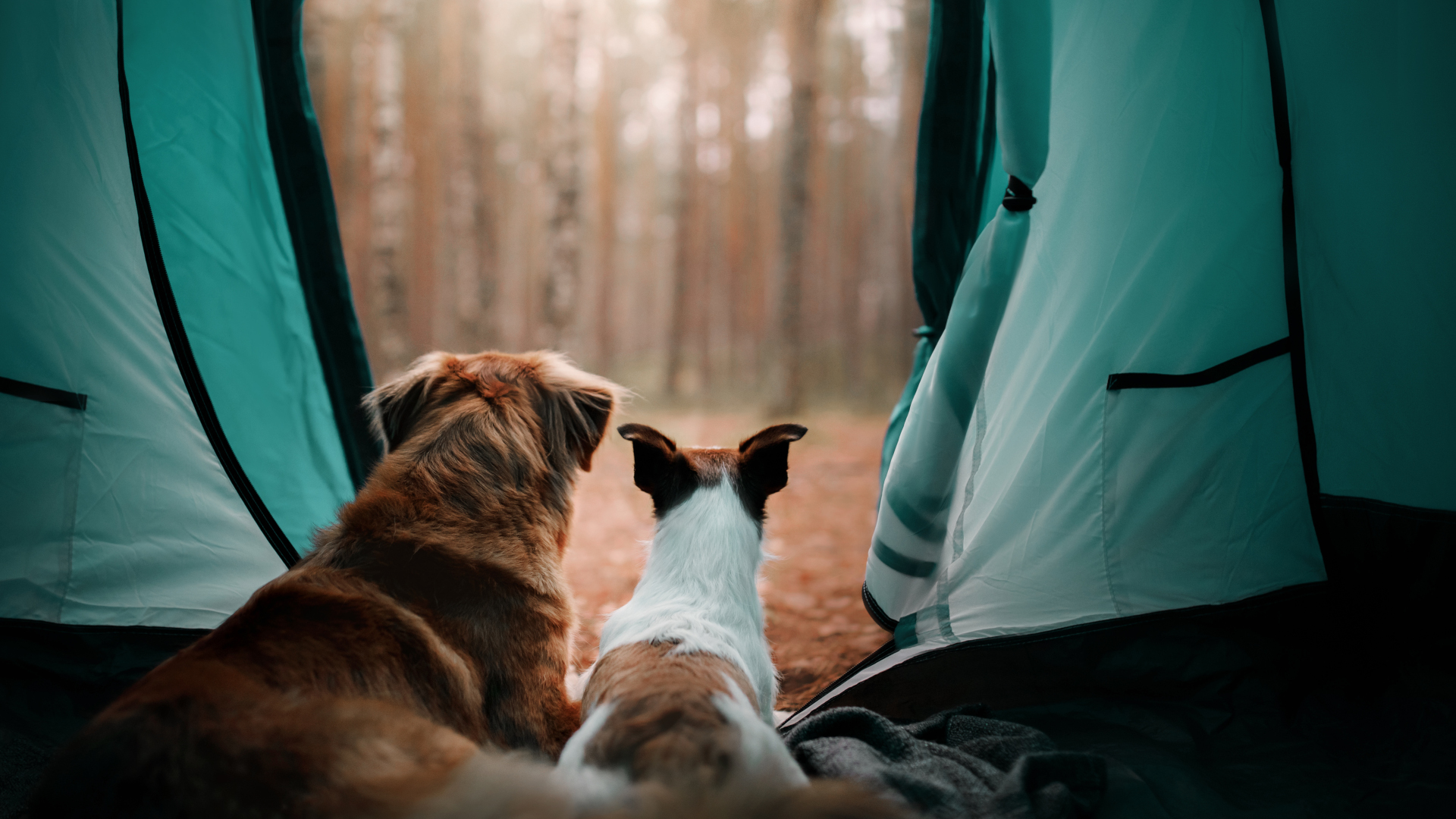
Are National Parks dog friendly? If you have a furry friend and are planning on exploring some of America’s sublime National Parks this summer, there’s no doubt that this question is on your mind. After all, the activities you enjoy in National Parks such as long hikes, swimming in the river and sleeping under the stars are some of your favorite pastimes to share with your dog.
The good news is that every one of America’s 63 National Parks do currently welcome dogs, however you can’t just saunter in and let Fido off the leash. There’s lots you need to know before you go with your dog and in this article, we cover some of the limitations and considerations you’ll need to take when entering a National Park with your dog, as well as what you’ll need to bring to make sure your pup is safe and comfortable.
Are National Parks dog friendly?
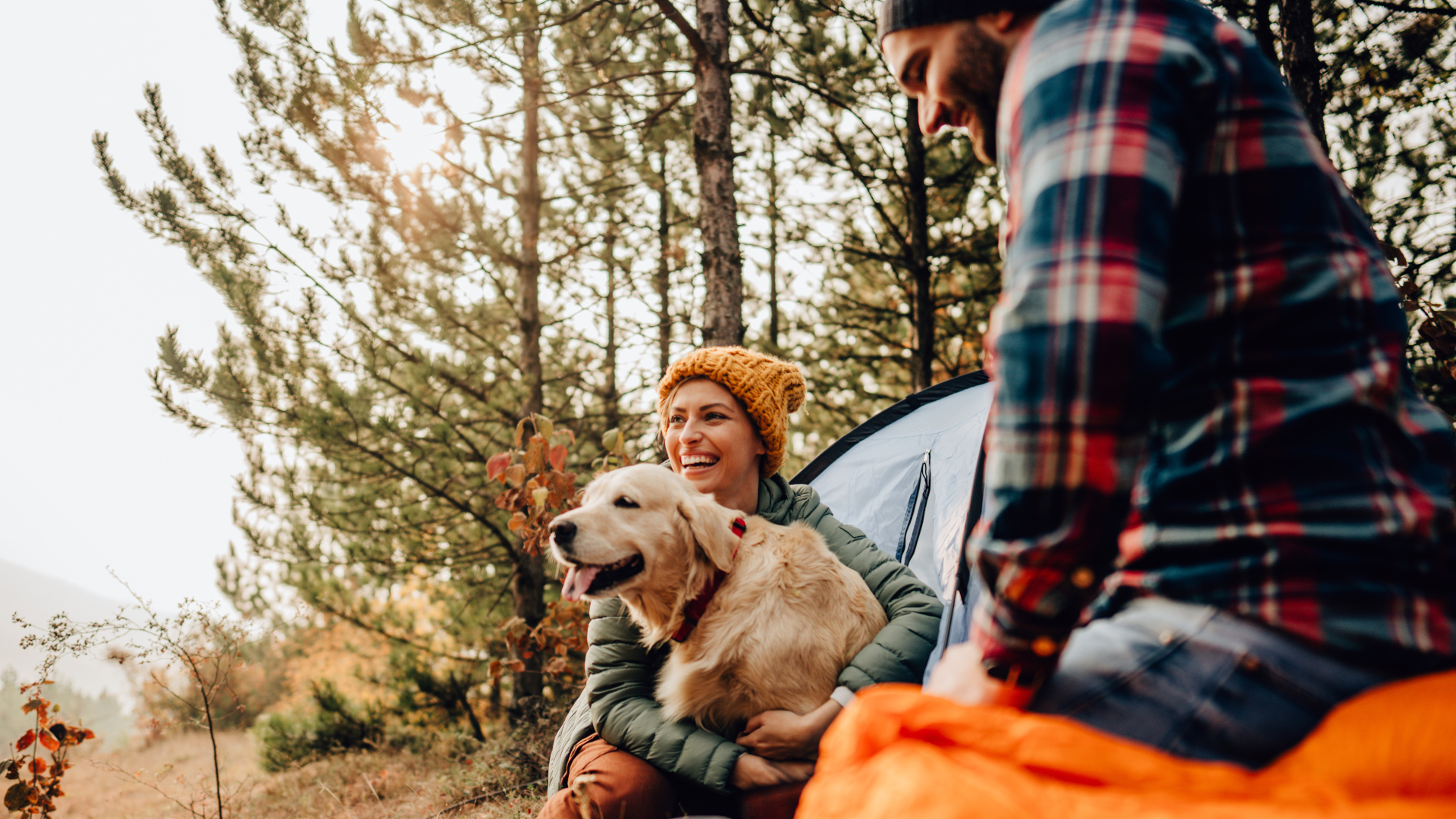
As we’ve mentioned, all of America’s National Parks currently allow dogs, however your dog always has to be on a leash in a National Park, and how much access is allowed varies from park to park and you might change your mind about bringing your dog once you have more details. For example, in Yellowstone National Park your dog can travel in your car and be on leash in front country campsites and within 100ft of a road, so you won’t be able to hike together. Meanwhile, down in Zion National Park dogs are only allowed one on trail, the Pa’Rus trail. But, before you lose hope, over in Yosemite National Park there are lots of great trails where dogs are allowed, provided they’re on a leash, and you’ll frequently see wagging tails on the trails there.
So the first thing you’ll need to do is find out what regulations the park you plan to visit has regarding dogs, particularly in your campsite and on any trails you plan to hike. Next, it’s a good idea to ask yourself a couple of honest questions regarding your dog. The first is whether or not your dog might pose any kind of threat to other people or wildlife. If your dog is volatile or prone to nipping at strangers, or worse, you’ll want to leave it at home. There have been unfortunate incidents of dogs attacking local wildlife in National Parks, the very purpose of which is to protect the delicate ecosystems and wildlife within their boundaries.
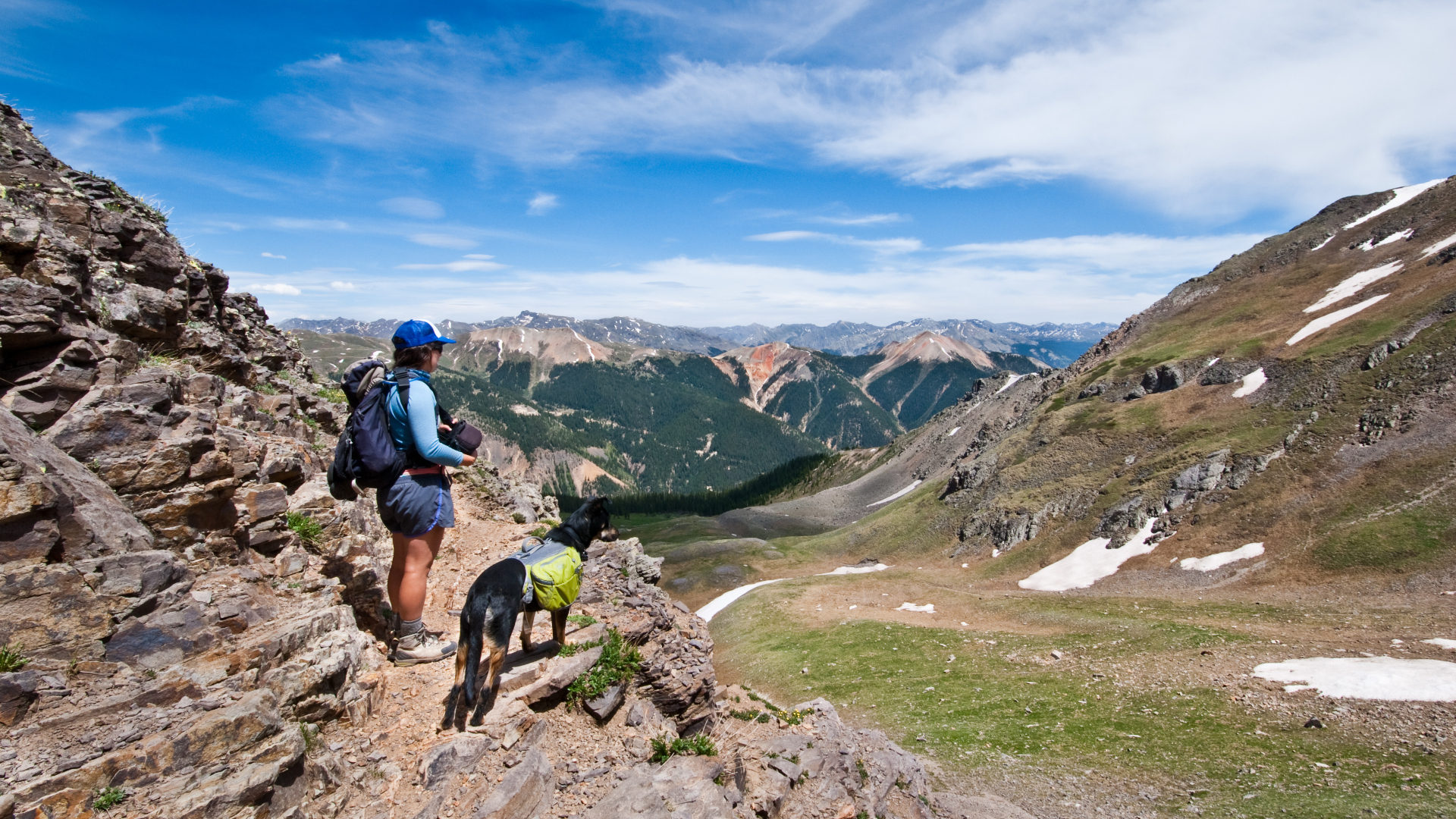
Even if your dog doesn't pose any threat to others, there’s the question of courtesy – if you’re camping, you’ll almost definitely be doing so amongst other people so you can’t bring a dog that barks all night.
Next, you want to consider how much fun it might actually be for your dog to be on a leash the entire time surrounded by so many new people, smells and sounds. Remember, National Parks are typically busy places, seeing almost 300 million visitors in 2021 alone. You might be camping with hundreds of other people who will be cooking, driving in and out and generally making noise. If that sounds like torture for your dog, check out the least crowded National Parks or the best National Parks to visit in winter when things are always quieter to lessen the stress on your dog.
Finally you need to consider what you want to do while you’re there. If you’re just planning on driving around and seeing the sights, your pooch might be happy sticking its head out the window, but if you are planning on packing your hiking boots and hitting a lot of hiking on trails that aren’t pet friendly, know that you won’t be able to leave your dog in your car so you’ll need to have someone along that can watch Fido.
Advnture Newsletter
All the latest inspiration, tips and guides to help you plan your next Advnture!
Taking your dog to a National Park: what to bring
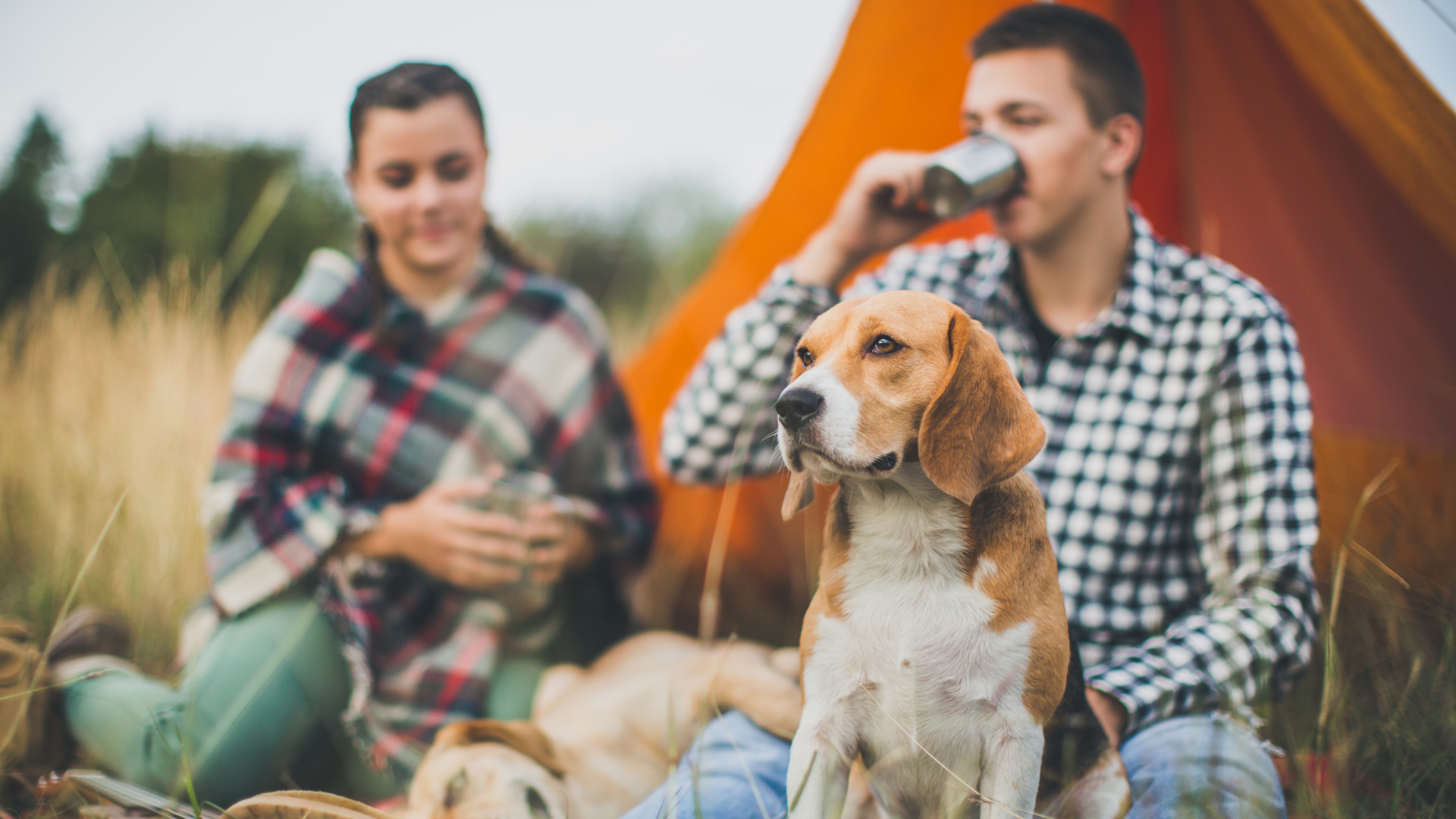
If you’ve decided to bring your dog to a National Park, start with our articles on hiking with your dog and camping with your dog to help you prepare. You’ll also want to make sure your dog is in good health and up to date on vaccinations. When it’s time to pack, you’ll want to bring the following items:
Leash
You can't let your dog jump up on other campers and hikers and insist it's friendly. In fact, dogs must be on leash at all times in National Parks and the rule is typically that the leash cannot be longer than six feet. Some parks will allow a longer leash for while you’re relaxing at camp, but you’ll need to check ahead.
Tether and stake
If you’re camping, you’ll want to tie your dog up while you’re hanging out. Many campsites won’t allow you to tie a leash around a tree. Use a nearby picnic table or bring your own tether and stake.
Collar and ID tags
Even though your dog is supposed to be on leash all the time, if it gets its eye on a tasty looking squirrel or rabbit, it might make a run for it. Make sure your dog is wearing its collar and ID tags at all times in case there’s a prison break.
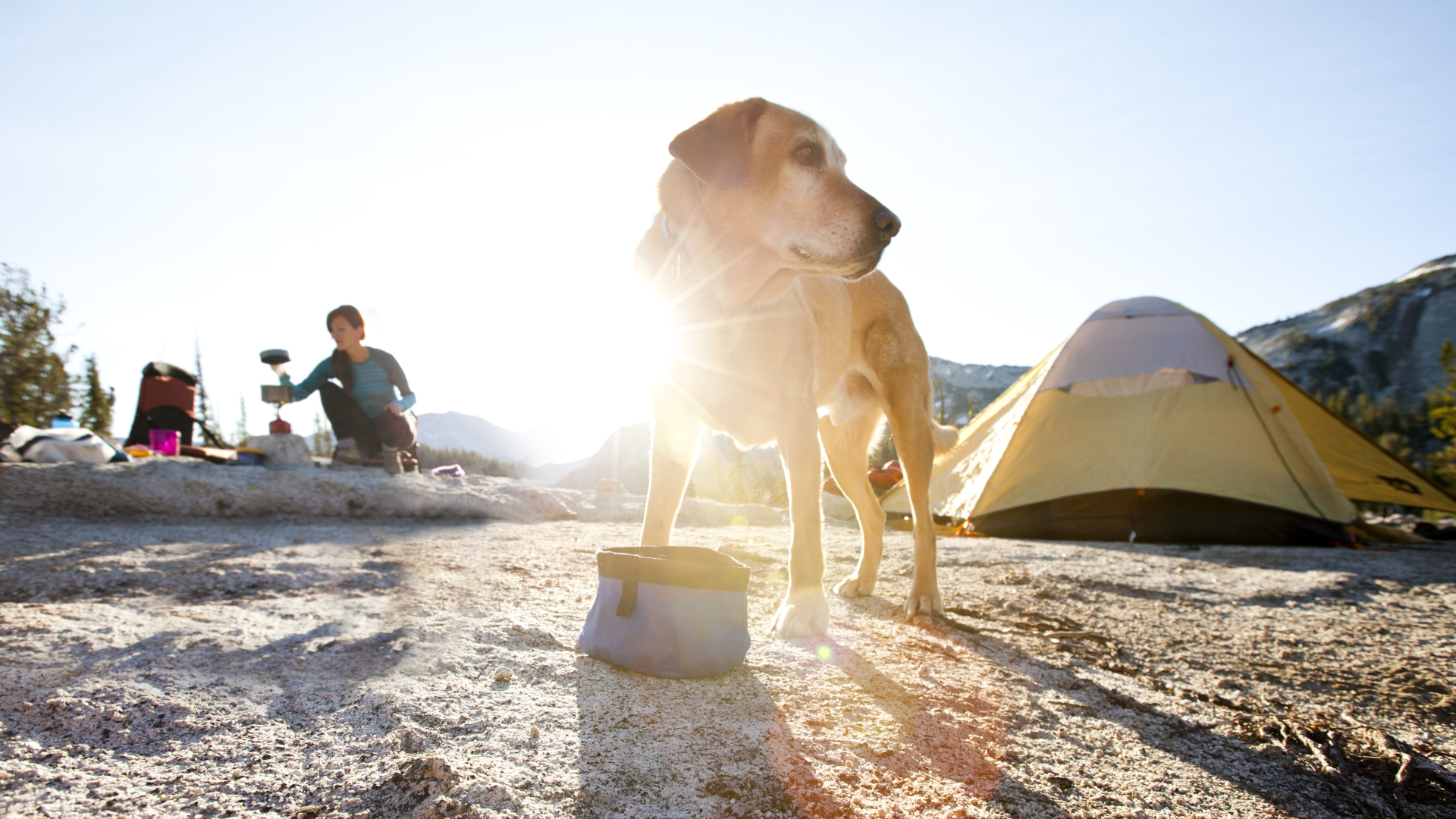
Water, food and bowls
Services within National Parks vary wildly but you shouldn’t plan on being able to purchase dog food within the park. Though public toilets will have running water, primitive campsites may not, so make sure you have enough water and of course, bring a collapsible bowl.
Poop bags
It’s your job to pick up after your pooch – keep an eye on things, bring more bags than you think you might need and use the available bins to dispose of your waste properly and keep our National Parks looking and smelling nice for everybody.
Julia Clarke is a staff writer for Advnture.com and the author of the book Restorative Yoga for Beginners. She loves to explore mountains on foot, bike, skis and belay and then recover on the the yoga mat. Julia graduated with a degree in journalism in 2004 and spent eight years working as a radio presenter in Kansas City, Vermont, Boston and New York City before discovering the joys of the Rocky Mountains. She then detoured west to Colorado and enjoyed 11 years teaching yoga in Vail before returning to her hometown of Glasgow, Scotland in 2020 to focus on family and writing.

